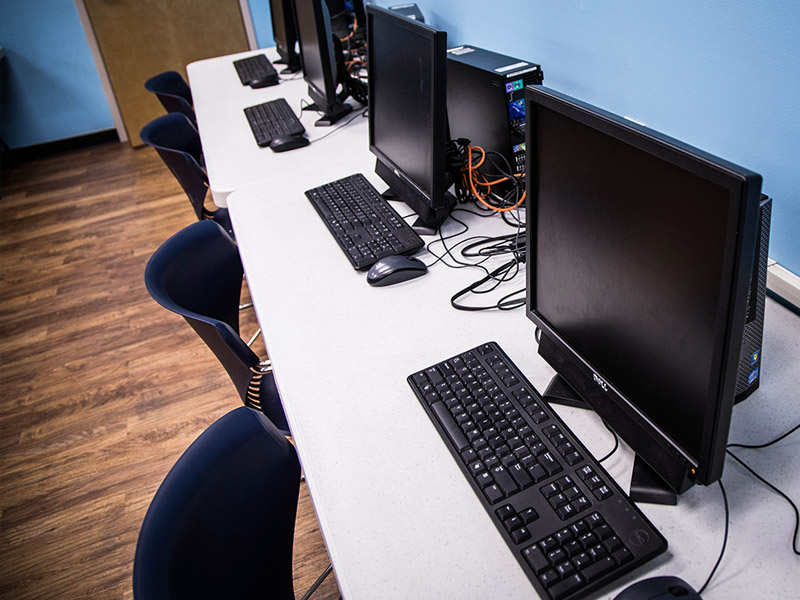No one experiences bipolar disorder the same way as someone else. Understanding the signs, symptoms and side effects of bipolar disorder is a key component toward starting the recovery journey.
Understanding Bipolar Disorder
Learn about bipolar disorder
Bipolar disorder is a mental illness that affects countless individuals throughout the world. It is a disorder that is defined by intense mood swings that cause the people suffering from it to go from experiencing the highest of highs to the lowest of lows. The symptoms of bipolar disorder affect those suffering from it so intensely that it impacts their ability to function on daily basis. Not only does it affect the individual’s life, but it can also severely impact the lives of those around the individual.
When bipolar disorder presents itself in children and adolescents, it is referred to as early-onset bipolar disorder. This disorder presents much differently in children than it does in adults. While adults may exhibit symptoms of a somewhat classical pattern of mood swings, children do not typically have a recognizable pattern of significant highs and lows. This fact has historically been the reason why professionals in the field were hesitant to provide children and adolescents with a diagnosis of bipolar disorder. As research has continued, however, there has been a lot of progress made in recognizing how bipolar disorder can be identified in children and how its symptoms stand out from those of other mental disorder diagnoses that have traditionally been given to children and adolescents.
Statistics
Bipolar disorder statistics
The National Institute of Mental Health states that studies have estimated the lifetime prevalence of bipolar disorder to be between 0-3% among children and adolescents. However, due to the fact that the boundaries of the diagnosis in children are still debated amongst professionals in the field, the actual prevalence is not well established.
Causes and Risk Factors
Causes and risk factors for bipolar disorder
There has yet to be an exact cause of bipolar disorder identified, but a combination of factors is believed to play a role in its development. These factors include:
Genetic: Bipolar disorder has been known to develop in people who have a blood relative who is suffering from the same condition. It is estimated that children who have one parent with bipolar disorder have a 15-25% chance of suffering from the same condition. Professionals in the field have also stated that children with bipolar disorder who do have a parent suffering from the same illness will typically experience the first episodes/symptoms of the disorder about ten years earlier than their parents did.
Physical: A chemical imbalance in the brain, including the dysfunction of certain neurotransmitters (which are responsible for sending messages throughout the brain) is said to have an impact of whether a person will experience the onset of bipolar disorder.
Environmental: While somewhat controversial, there are some professionals who believe that environmental factors can play a role in the onset of bipolar disorder, even without any genetic influences. It is more commonly accepted, however, that for environmental factors to come into play, they must be interacting with genetic traits in some way.
Risk Factors:
- Having a parent who suffers from bipolar disorder
- Having family members who suffer from other types of mental illnesses
- Substance abuse
- Trauma
- Major life changes
- Major life stressors
Signs and Symptoms
Signs and symptoms of bipolar disorder
The signs and symptoms of bipolar disorder can present very differently from one child to the next. The symptoms will also vary based on whether the child or adolescent is experiencing a manic state, a depressive state, or a mixed state. The following are some examples of various symptoms that a child or adolescent suffering from bipolar disorder may exhibit:
Behavioral symptoms:
- Explosive temper tantrums
- Aggressive behaviors
- Oppositional and defiant behaviors
- Hypersexuality
- Manipulative behaviors
- Self-harm
- Impulsivity
- Rapid speech
- Hoarding
- Restlessness / fidgeting
Physical symptoms:
- Extreme fluctuations in bodily temperature
- Being easily startled
- High arousal states
- Bedwetting (mostly in younger children)
- Motor or vocal tics
- Needing excessive amounts of sleep and/or not needing any sleep at all
Cognitive symptoms:
- Racing thoughts
- Separation anxiety
- Experiencing hallucinations and delusions
- Difficulty concentrating / easily distracted
- Poor working memory
- Excessive irritability
Psychosocial symptoms:
- Low self-esteem
- Feelings of grandiosity
- Feelings of elation (typically represented by periods of silly, giddy, or goofy behaviors)
- Prolonged periods of emotional excitability
- Being easily humiliated or shamed
Effects
Effects of bipolar disorder
Bipolar disorder is chronic illness, which will continue to affect those suffering from it throughout their lifetime. There is no cure for bipolar disorder, but it can be successfully managed through various treatments, including the use of psychotropic medications and various types of therapy. However, if children and adolescents are not provided with treatment, their episodes and symptoms are likely to continue worsening, and will continue to worsen long into adulthood. Some long-term effects of bipolar disorder can include:
- Academic failure
- Inability to successfully establish and maintain a career
- Unable to develop or maintain healthy, lasting relationships
- Criminal involvement / incarceration
- Chronic self-injury
- Substance abuse
- Suicide
Co-Occurring Disorders
Bipolar disorder and co-occurring disorders
Children and adolescents suffering from bipolar disorder are commonly believed to be suffering from other disorders as well. However, whether or not it is appropriate to provide a child or adolescent with an additional diagnosis continues to be debated as the symptoms of bipolar disorder can oftentimes mirror the symptoms of these other disorders.
Some examples of these co-existing disorders can include the following:
- Attention-deficit hyperactivity disorder (ADHD)
- Oppositional defiant disorder (ODD)
- Conduct disorder (CD)
- Anxiety disorders
- Panic disorder
- Eating disorders



